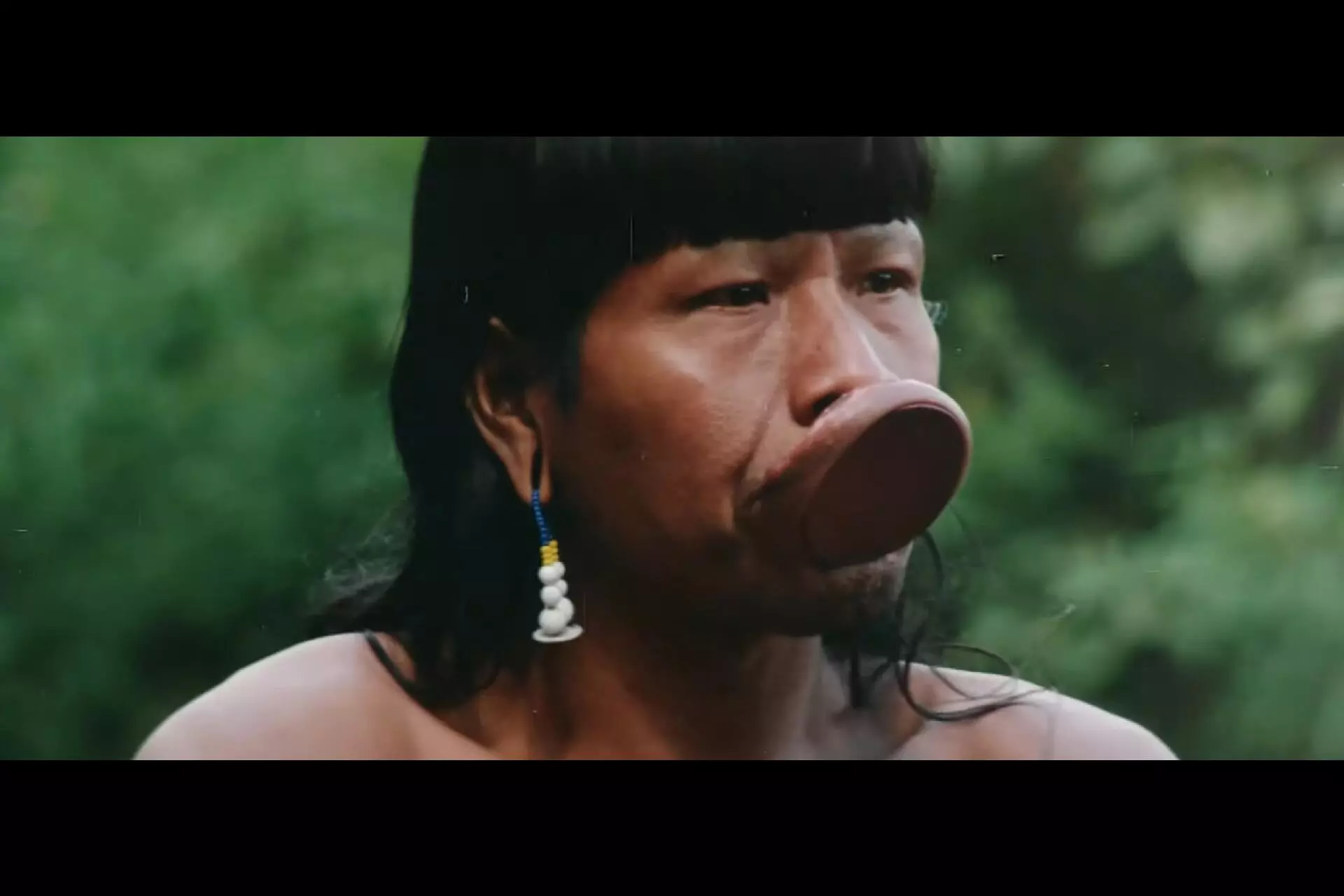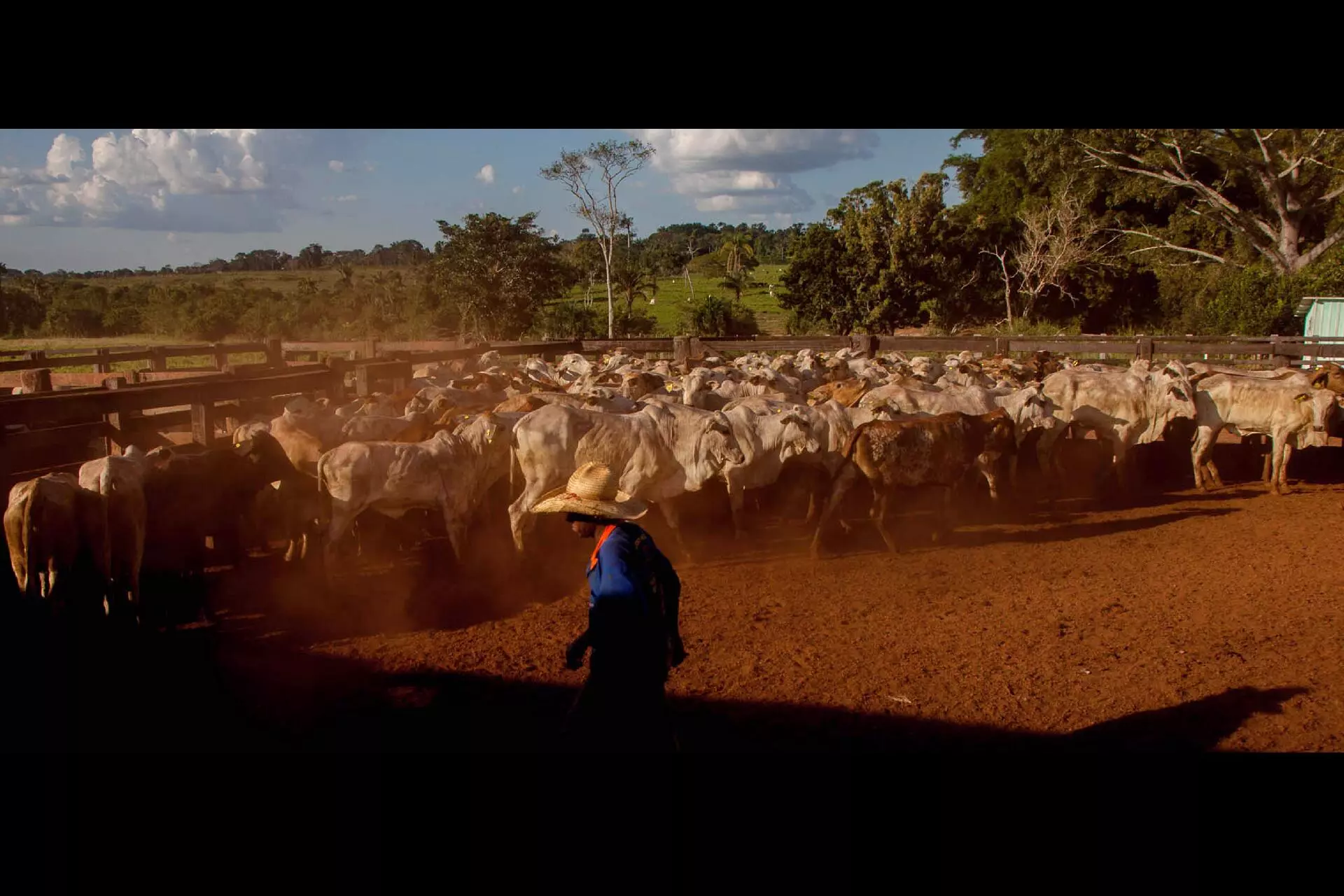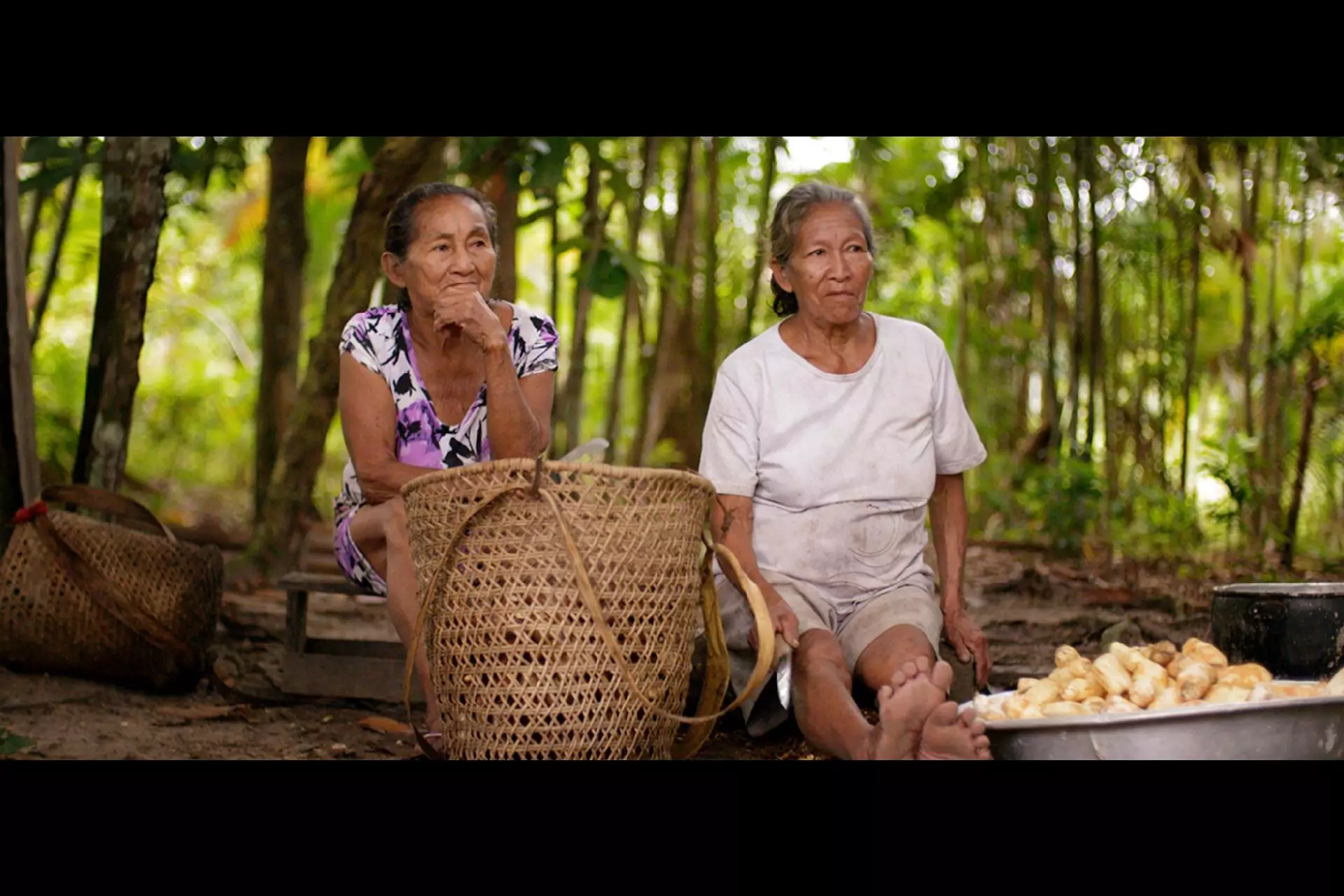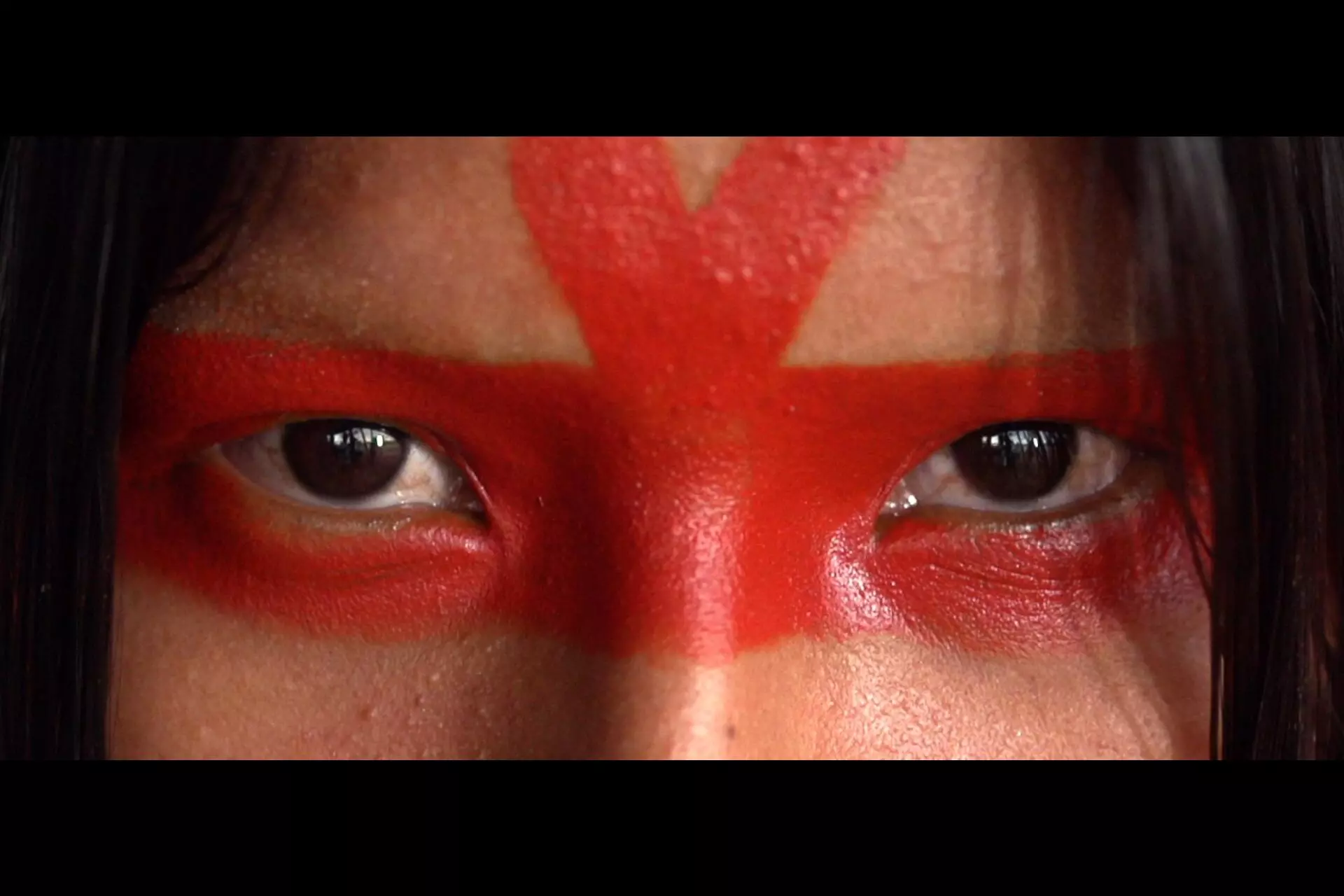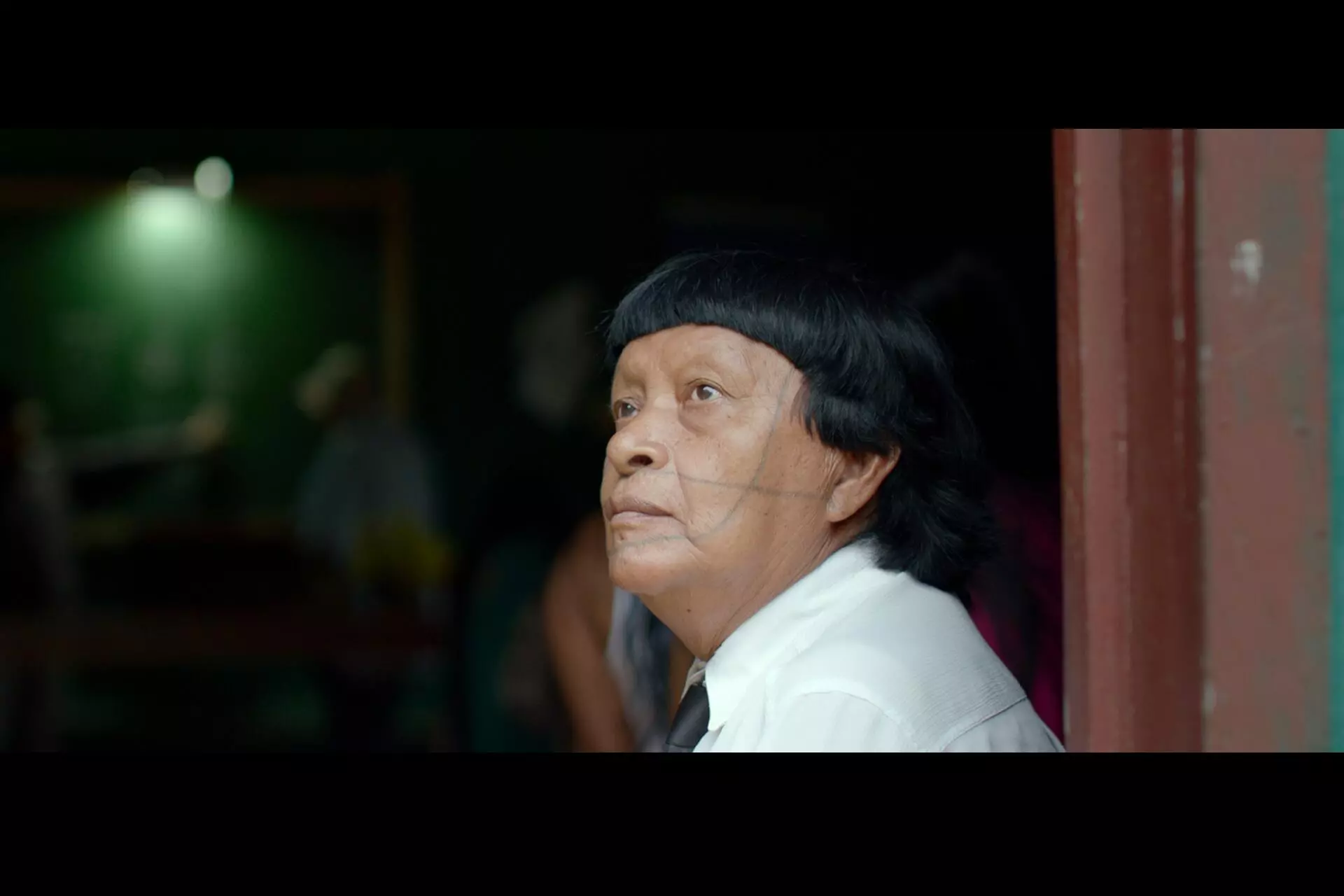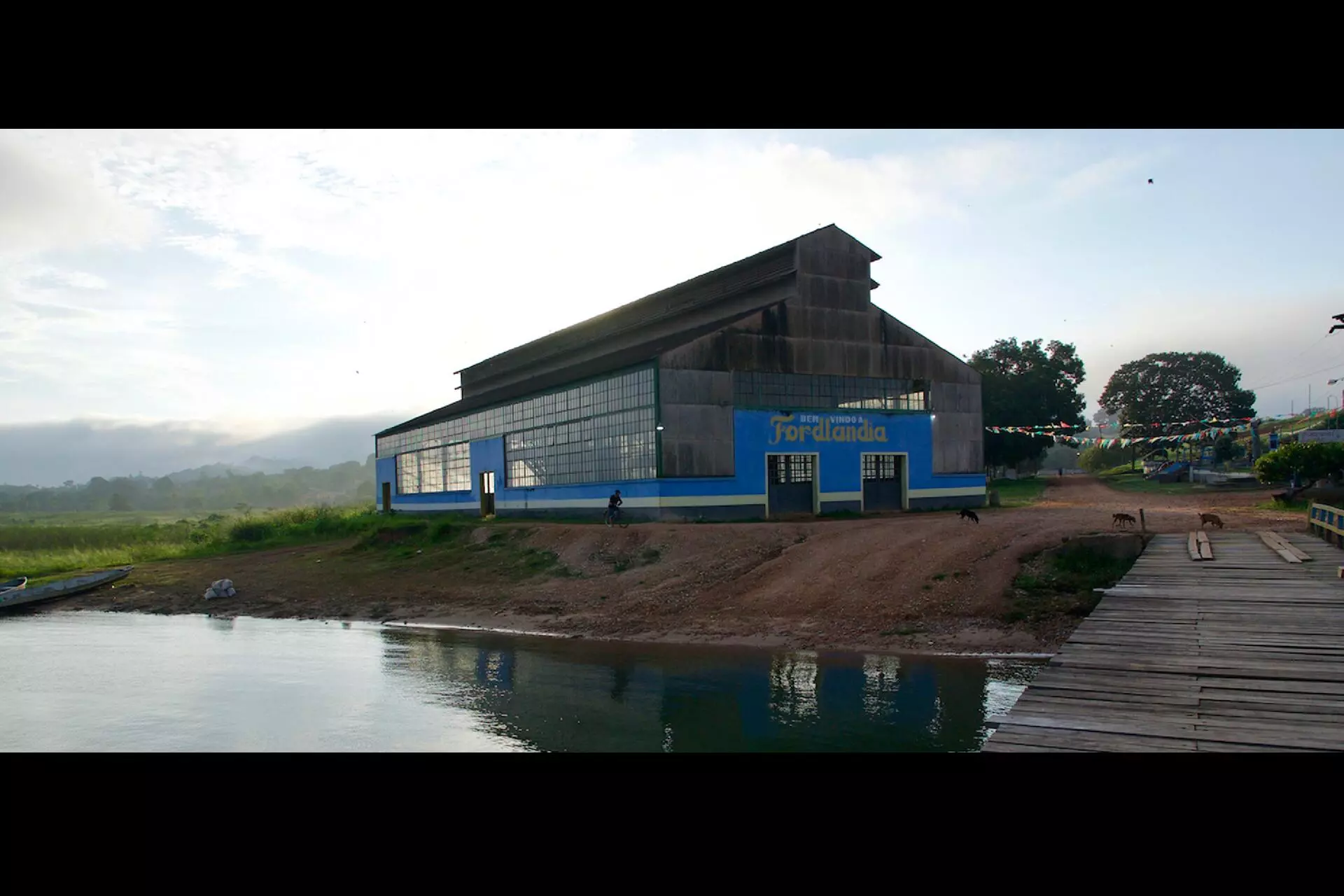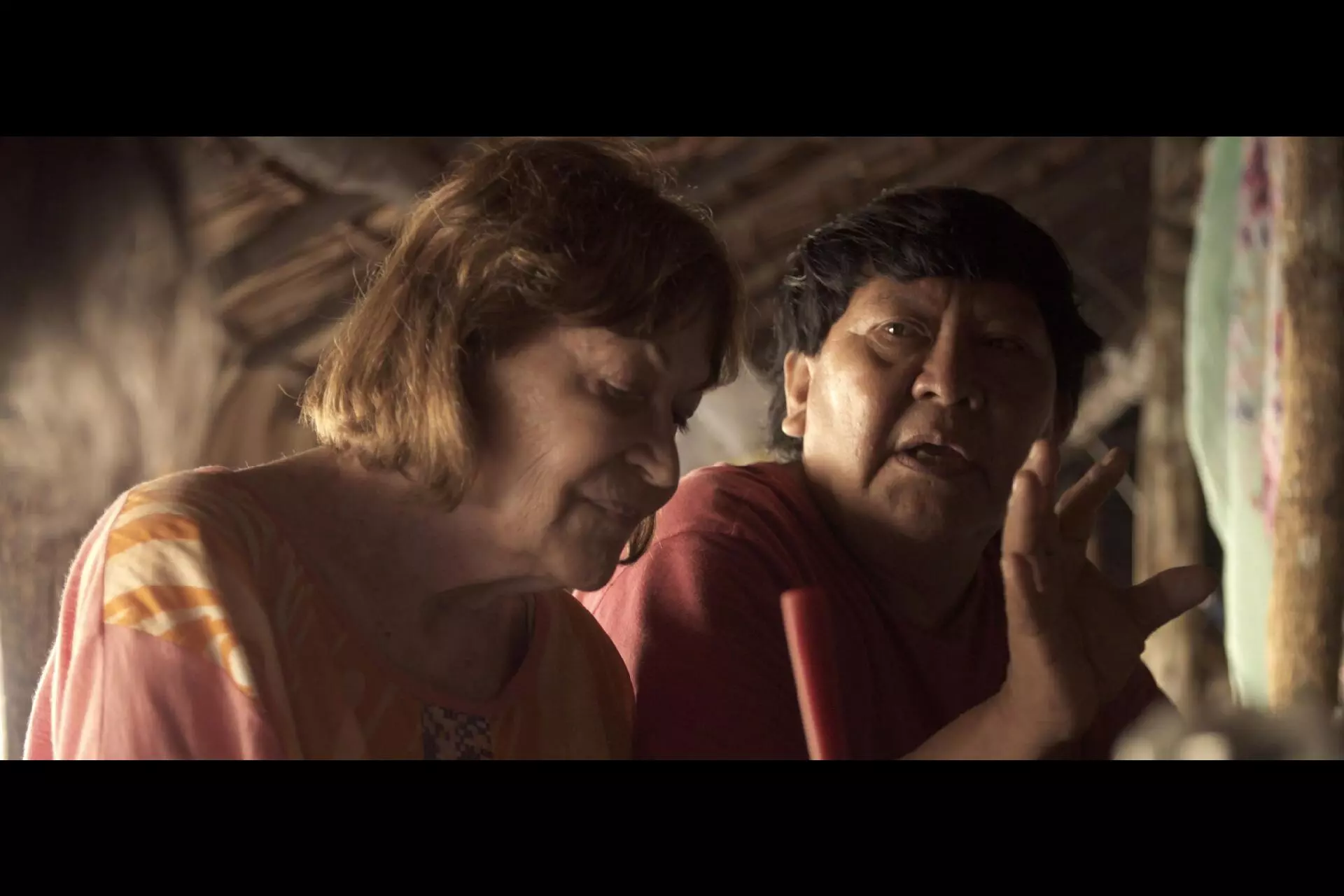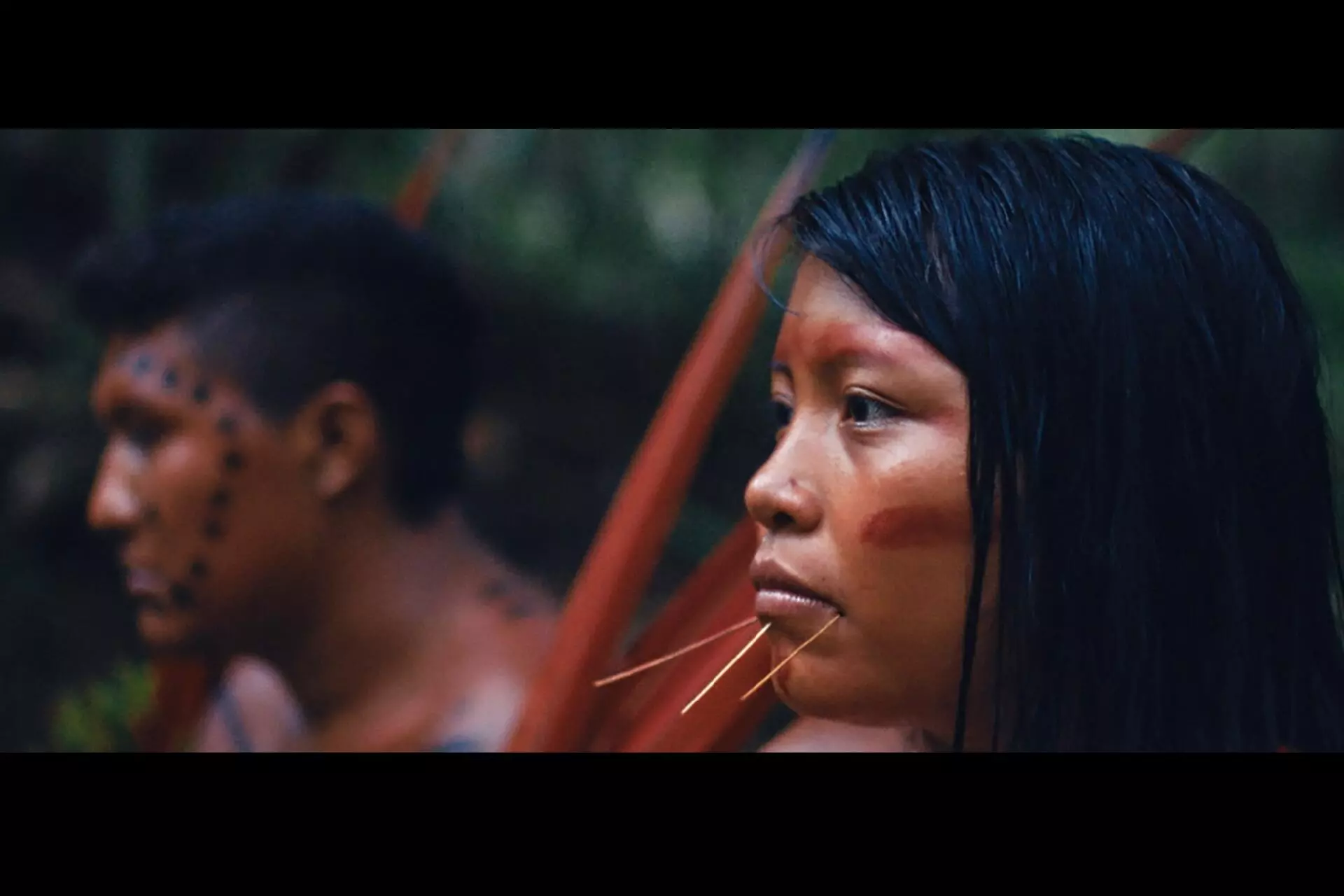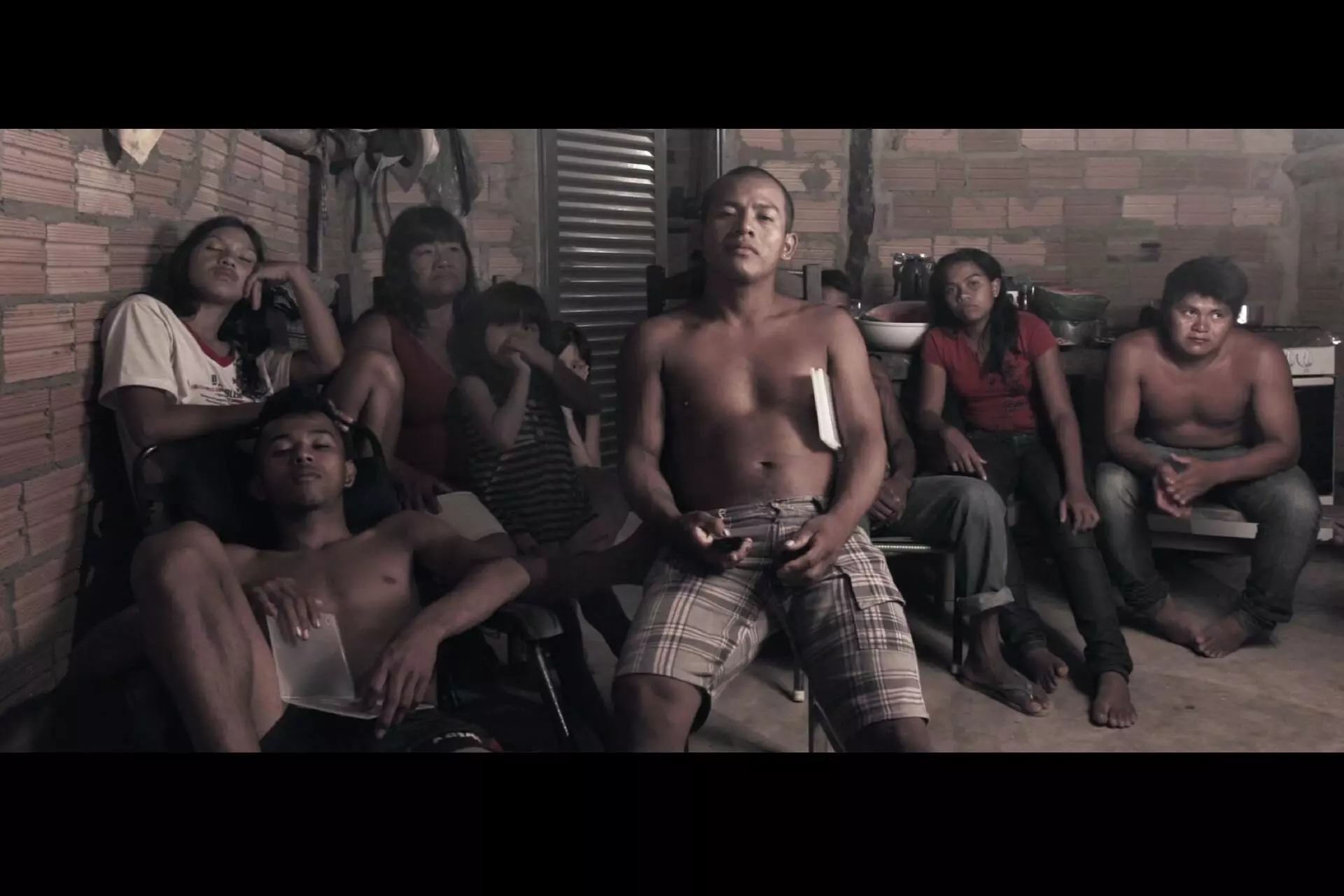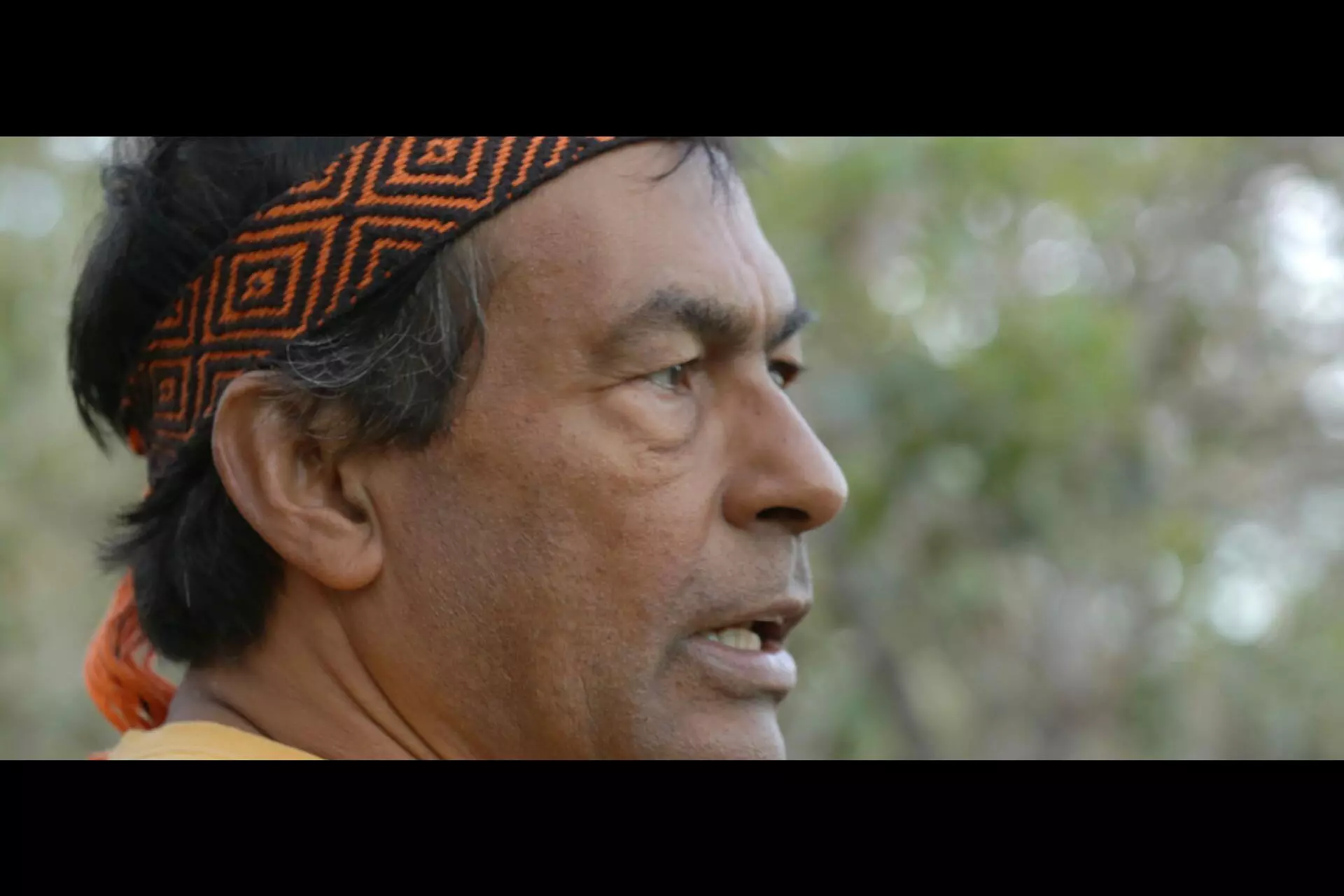Writing a list is always a challenge. Definitive by nature, putting our choices down on paper and suggesting them to others is a huge responsibility. But a handful of film suggestions can never define the Amazon and its vast complexity. Therefore, I’ve presented an initial selection of beauty and sadness, as well as of great struggle. The list is also a survey of a range of subjects that can serve as an introduction to highly complex themes, such as the forced contact between isolated indigenous peoples and whites, the destruction of language, the invasion of areas of pasture, and capitalist attempts to control the forest.
These films are widely accessible on online rental services or streaming platforms, which can offer a great deal of quality, “hidden”, material. I hope this list inspires you to explore new stories, and further pursuit of knowledge.
Raoni. Jean Pierre Dutilleux and Luiz Carlos Saldanha (1978)
When Brazil’s most prominent indigenous figure, Chief Raoni Metuktire, alongside other representatives of Brazilian society, handed the country’s new president, Luiz Inácio Lula da Silva (popularly known as Lula) the presidential sash at his inauguration, it was another triumph in a lifetime of fighting for his people. The documentary Raoni tells his story from the beginning, when the young Kayapó (Mẽbêngôkre) chief begins his battle to preserve his people’s land and way of life from the whites. Recorded in secret during the business-military dictatorship which governed Brazil between 1964 and 1985, the film offers precious glimpses of a culture threatened by invaders who deforest, drive out wildlife and kill indigenous people with their diseases and poisons, all in the interests of cattle farming.
Where to watch:: Youtube (free); Libreflix (free)
Grazing The Amazon (Sob a Pata do Boi). Marcio Isensee e Sá, 2018
Do you know where the meat you eat comes from? How many human and non-human lives it has destroyed before arriving on your plate? You’ll no doubt ask yourself these uncomfortable questions after watching this documentary, produced by the ((o))eco website and the Amazon Institute of People and the Environment. The film shows how the Brazilian government itself began to encourage the predatory exploitation of the forest in the 1960s, leading to the current tragedy, where 20% of the Amazon has already been destroyed, with two thirds of that area turned into pasture. Watching it, even meat eaters will start to consider vegetarianism attractive.
Where to watch: Amazon Prime, Claro TV, Google Play or iTunes
Nheengatu. José Barahona, 2020
A language invented to erase other languages and at the same time, destroy other cultures. Portuguese director José Barahona searches the Rio Negro region for speakers of Nheengatu, a language adapted from local languages by colonizers (and his fellow countrymen) to reduce the cultural diversity of Brazil’s indigenous peoples, before converting them to Christianity, and transforming them into a source of pacified labor. The film shows how the arrival of the whites radically transformed traditional ways of life, and tells a story little known in Brazil.
Where to watch: Amazon Prime and Claro TV and Apple TV
Amazon Uncovered (Amazônia Sociedade Anônima). Estevão Ciavatta, 2020
Recorded with the participation of the Munduruku audiovisual collective, Amazon Uncovered offers stunning images of the biodiversity of the Amazon rainforest and explains how the biome has deteriorated over the last four decades. As threats from invaders grow ever closer, and in the absence of support from an omissive government, ribeirinho (members of traditional forest communities) and indigenous peoples, led by Chief Juarez Saw Munduruku, unite to demarcate their lands themselves.
Where to watch: GloboPlay, YouTube films, Apple TV, Google Play
Ex-Shaman (Ex-Pajé). Luiz Bolognesi, 2018
A heartbreaking film about the changes whites and religious missionaries forced on the Suruí Paiter people in the Sete de Setembro Indigenous Territory, in the state of Rondônia, from the end of the 1960s onwards. The film shows how Perpera Suruí, the Suruí Paiter’s shaman, was forced to abandon the practices of the religion of his ancestors by evangelical pastors who condemned shamanism. Marginalized by his own, already-converted community, Perpera accepted the invaders’ religion, and opened his church to Christian religious services. He even adopted the clothes of the whites, wearing pants, shirts and jackets that were too big for him. The forest spirits would not forgive.
Where to watch: Netflix, Apple TV, YouTube films, GloboPlay
Beyond Fordlândia. Marcos Colón, 2017
In the mind of Henry Ford, the plan must have seemed simple: transform an enormous swathe of the Amazon into a rubber tree plantation to allow extraction of the latex needed for the tires of his cars, reducing manufacturing costs. But those seeking profit underestimated the power of the forest, and the artificial city he created in the middle of Pará, in the 1920s, never prospered. The documentary shows how the episode was merely the gateway to extensive monoculture farming in the Amazon, and how the growth of soybean farming, another of Ford’s interests, would spread, causing enormous damage.
Where to watch: Vimeo
Gyuri. Mariana Lacerda, 2022
A tribute to the Swiss photographer and naturalized Brazilian Claudia Andujar, and Yanomami leader Davi Kopenawa, who fought together for the demarcation of the Yanomami Indigenous Land in the 1980s, with victory finally achieved in 1992. Claudia, 90, defies her physical limitations to return to Demini, Kopenawa’s village, where she meets her comrade-in-arms to recall the Yanomami’s desolate past (a return to which remains a danger in the threatened territory) and how demarcation was achieved. The incredible photos of Andujar, who fled Nazism and discovered her cause among the Yanomami, and the images of everyday life in the village, are a gift to viewers, as is the delightful camaraderie between Andujar and Kopenawa, at heart like mother and son.
Where to watch: Apple TV, YouTube films, GloboPlay
The Last Forest (A Última Floresta). Luiz Bolognesi, 2021
If Gyuri explores the past of the Yanomami people, The Last Forest portrays their present. The film, whose screenplay was co-written by Davi Kopenawa, reveals the current tragedy of the Yanomami, trapped in a territory invaded by gold mining. As part of the community, led by shamans, fights against the invaders, another is seduced by the cash potentially offered by criminal activity. The story is told by indigenous actors from Kopenawa’s village, Demini, who act out the origins of the world according to the Yanomami cosmovision, and show how the extraction of gold by the invaders can cause “the fall of the sky“.
Where to watch: Netflix
Taego Ãwa. Henrique Borela and Marcela Borela, 2017
Victims of the forced contact strategies of the Brazilian government, in 1973 the few survivors of the Ãwa ethnic group who had lived in isolation in the forest in the state of Tocantins, were forced from their land, which was then handed over to cattle ranchers. The film’s directors show images of this forced contact, which occurred under Brazil’s business-military dictatorship’s “integration” policy for the Amazon, to the descendants of those Ãwa who were captured in the forest decades ago. The photographs and videos, found by chance by the filmmakers in a university locker, provide a stark contrast with the day-to-day life of more recent generations, who have had their land and culture usurped, and now fight to demarcate the territory where their ancestors lived. The film gives a sense of the damage caused by the military government’s ”Attraction Campaigns” aimed at indigenous peoples, and helps us to understand the importance of the non-contact policy in force in Brazil since redemocratization, where the wishes of groups who desire to remain isolated in the forest are respected.
Where to watch: Claro TV
The Amazon – The Awakening of Florestania (Amazônia – O Despertar da Florestania). Christiane Torloni and Miguel Przewodowski, 2019
A portrait of how politics and destruction can go hand in hand, depending on the interests of those in power, and how the development of Brazil has always been founded on the destruction of the forest. The documentary uses archive footage, testimonies and interviews to show the struggle of those who have been trying to keep the forest standing since the first waves of destruction wrought by the country’s business-military dictatorship.
Where to watch: GloboPlay
Translated by James Young




